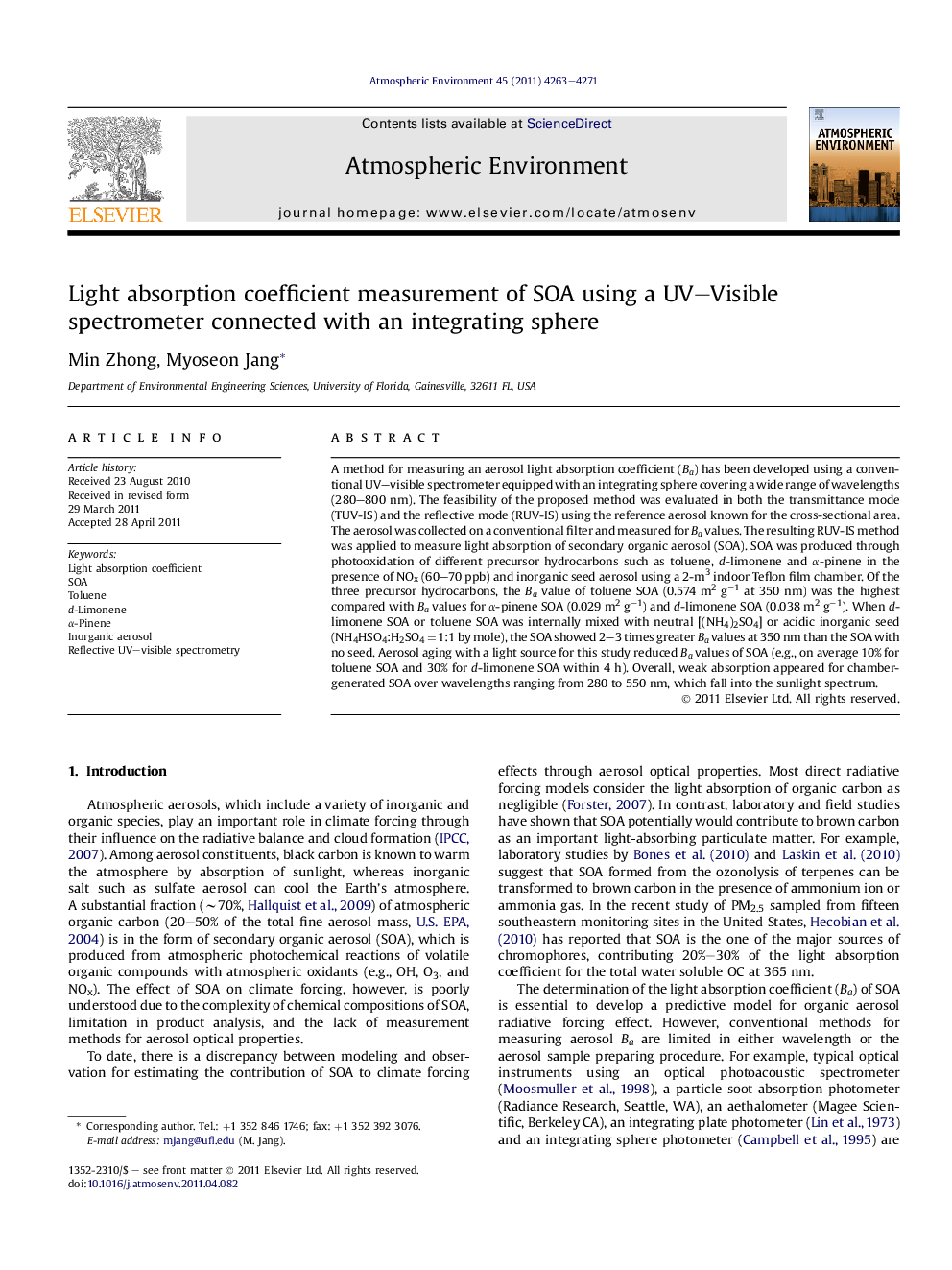| Article ID | Journal | Published Year | Pages | File Type |
|---|---|---|---|---|
| 4439549 | Atmospheric Environment | 2011 | 9 Pages |
A method for measuring an aerosol light absorption coefficient (Ba) has been developed using a conventional UV–visible spectrometer equipped with an integrating sphere covering a wide range of wavelengths (280–800 nm). The feasibility of the proposed method was evaluated in both the transmittance mode (TUV-IS) and the reflective mode (RUV-IS) using the reference aerosol known for the cross-sectional area. The aerosol was collected on a conventional filter and measured for Ba values. The resulting RUV-IS method was applied to measure light absorption of secondary organic aerosol (SOA). SOA was produced through photooxidation of different precursor hydrocarbons such as toluene, d-limonene and α-pinene in the presence of NOx (60–70 ppb) and inorganic seed aerosol using a 2-m3 indoor Teflon film chamber. Of the three precursor hydrocarbons, the Ba value of toluene SOA (0.574 m2 g−1 at 350 nm) was the highest compared with Ba values for α-pinene SOA (0.029 m2 g−1) and d-limonene SOA (0.038 m2 g−1). When d-limonene SOA or toluene SOA was internally mixed with neutral [(NH4)2SO4] or acidic inorganic seed (NH4HSO4:H2SO4 = 1:1 by mole), the SOA showed 2–3 times greater Ba values at 350 nm than the SOA with no seed. Aerosol aging with a light source for this study reduced Ba values of SOA (e.g., on average 10% for toluene SOA and 30% for d-limonene SOA within 4 h). Overall, weak absorption appeared for chamber-generated SOA over wavelengths ranging from 280 to 550 nm, which fall into the sunlight spectrum.
► UV–VIS spectrometer with an integrating sphere to measure aerosol light absorption. ► Light absorption coefficient of atmospheric organic aerosol. ► Reflective UV–Visible spectrometry feasible for aerosol filter samples.
